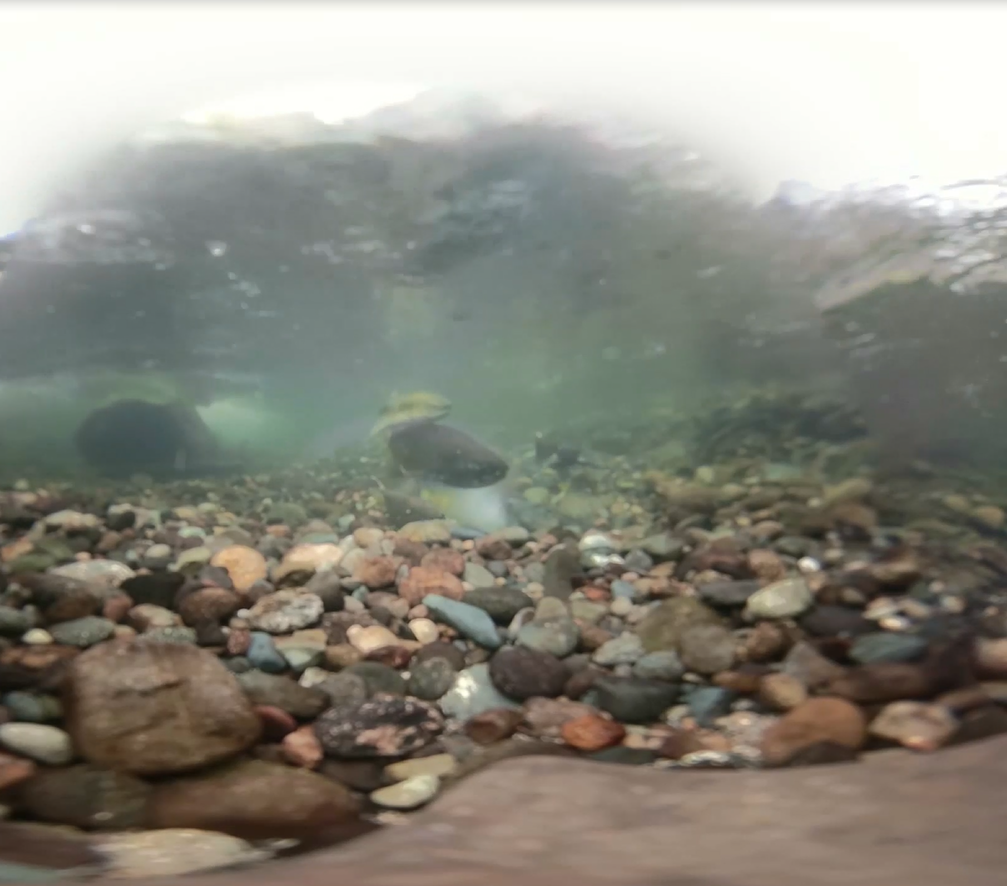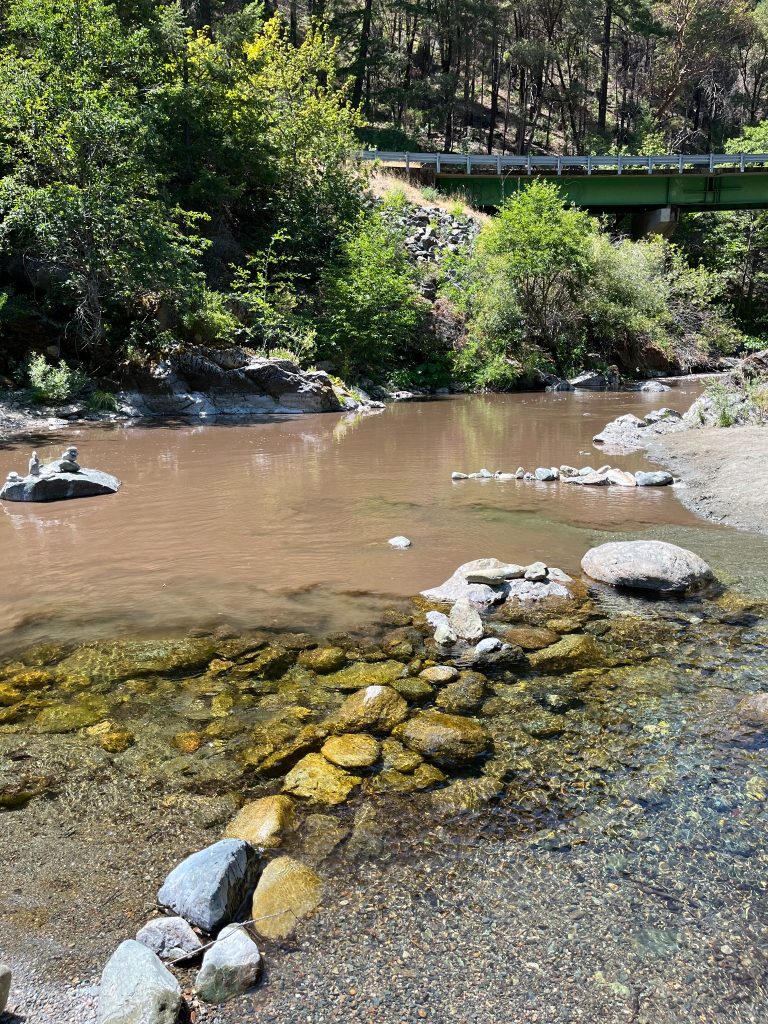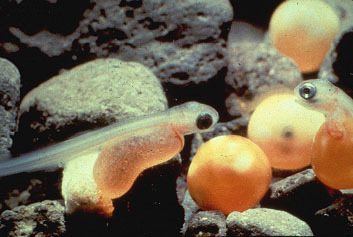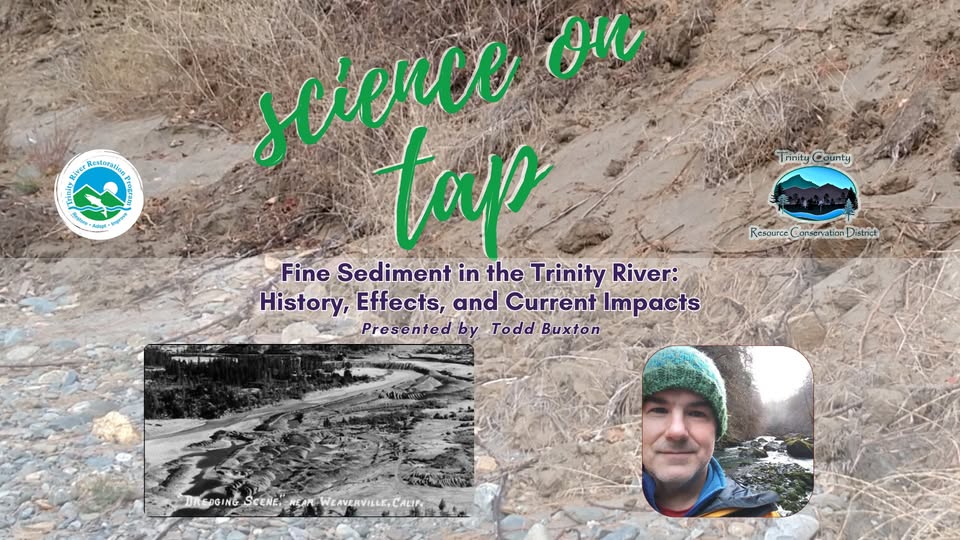
Rivers are dynamic ecosystems shaped by multiple interacting and overlapping physical and biological processes. A fundamental aspect of a river’s ecology is sediment, which is the foundational underpinnings of habitats, influence for water quality, and support for wildlife. In this article, we explore terminology and features of Trinity River sediments, the building blocks of our river system.
What is Sediment?
Although it might seem obvious, all sizes of rocks fit into the larger family of sediments. Sediments are inorganic particulates that can be transported by water, wind, or ice and deposited and perhaps stored for long periods of time in a particular location. In rivers, sediment is further classified according to its diameter and composition:
- Clay (Particles smaller than 0.002 mm): Clay transports while suspended in the water column and when deposited can store nutrients aiding the growth of biology when organics chemically bind to individual clay particles.
- Silt (Particles 0.002 mm to 0.063 mm): Silt also transports suspended in the water column and can affect light penetration and aquatic plant growth, just as clay particles do. Clays and silts that cloud the water also provide cover for fish, which use the cloudy water as protection from predators and tend to survive at higher rates when available intermittently.
- Sand (Particles 0.063 mm to 2 mm): Sand provides a medium for plants to establish and grow. This sediment type provides rearing habitat for juvenile lamprey when located in deposits below large rocks or trees, and acts as a filter to benefit water quality when deposited between gravel particles.
- Gravel (Particles 2 mm to 64 mm): Ranging from the size of a small blueberry to a large kiwi, gravel offers essential spawning grounds for fish and invertebrates.
- Cobble (Particles 64 mm to 128 mm): About the size of an orange, cobbles are the framework for bar deposits in river systems. When settled they form a surface that is difficult to mobilize from and creates roughness that encourages small particles to deposit on top of them. While waters flow over through and under these habitat formations the sediments caught provide a diversity of flow in depth and velocity which species depend on in streams.
- Boulders (Rocks larger than 128 mm): These create physical barriers in rivers that help form log jams, leading to diverse flow patterns and detailed habitats for a range of organisms.
Sources of Sediment in River Systems

Sediment can enter river systems through multiple processes, each contributing to the overall sediment dynamics and ecology of the river. Key sources of sediment include:
- Erosion: As water flows over land soil and rock can move with it. Depending on the landscape and the soil content these sediments can be delivered to rivers, especially during heavy rainfall or rapid snowmelt.
- Runoff: Rain and melting snow can wash fine sediments from forests, fields, urban areas, roads, and construction sites into nearby streams and rivers.
- Bank Collapse: Riverbanks can be eroded by the current of flowing water, particularly in areas with high flow velocities, resulting in banks collapsing directly into the water.
- Tributary Inputs: Creeks can contribute sediment as they flow into larger rivers, contributing sediments from their own drainage basins.
- Human Activities: Construction, mining, and land clearing can disturb soil and rock, increasing sediment loads in nearby rivers. Deforestation can also enhance erosion rates when tree roots are damaged or destroyed, leading to hillslope failures into streams.
- Natural Events: Floods, landslides, wildfires and volcanic eruptions can rapidly introduce large amounts of sediment into river systems, altering habitats and turbidity.
- Aquatic Organisms: Organisms can influence sediment storage by building dams (beavers) or webs between gravels to capture food and fines (net-spinning caddisfly). Organisms can also mobilize sediment when building nests (salmon) or grazing for food, such as crayfish winnowing fine sediments from amongst gravels.
Pool and Riffle Dynamics
When the slope of a river is greater than 2 percent, water moves quickly over rocks and other obstacles creating rumbling mountain streams. Moving downstream as the valley walls open and slope decreases a pool and riffle river system will form. The creation of alternating river bends is based on physical obstacles along the river’s path and water velocity which will form deep (pools) and shallow (riffles). The dynamic plays a crucial role in the movement and storage of sediment as the river runs its course to the ocean. A few key terms:
- Pools: Pools are deep areas of the river that form over time with flow velocity that scours (or digs) small unstable sediments from the area. Pools offer dynamic habitat during different times of the year that include a varied temperature column in the summer months when waters slow within the river. In winter, during high flows, pools are areas where faster water occurs. The increase in speed in pools relative to their companion riffles is what is responsible for pools scouring to depths found in summer.
- Riffles: During lower flows that occur in late spring through fall, faster currents are found in riffles because the water surface is steeper on them. Riffles are nursery areas for macroinvertebrates and help oxygenate the water and benefit species that thrive in turbulent conditions. High flows in winter that scour pools deposit sediments from the scour on riffles downstream, and in this way a pool-riffle sequence of habitats is formed and maintained on alluvial rivers.
Salmon and Sediment Interaction

Salmon are a keystone species in freshwater ecosystems, and their interaction with sediment is crucial for their lifecycle. During spawning, female salmon seek out gravel beds on riffles and near the streams banks to lay their eggs. These gravel beds, composed of appropriately sized sediment, are essential because they provide the necessary water flow to provide oxygen to fertilized eggs, ensuring their development to the fry stage.
Additionally, the composition and stability of sediment in spawning areas can influence the quality of habitat available for juvenile salmon. Fine sediments, often stirred up during high flow events, can cover spawning habitats, suffocating eggs and reducing the overall success of salmon populations when fines are overly present.
However, Trinity River geomorphologists are learning that too few fines also pose survival risks to salmon. When spaces between gravels where eggs are spawned are left open, turbulence is created through flow within the salmon nest and can jiggle eggs causing abrasion to the egg membrane, leading to mortality. Too few fines can also cause surface flows in a river to be conveyed entirely through a bar, sieving off the juvenile salmon onto dry bar surfaces for predation by birds.

Maintaining a balanced sediment regime within pool and riffle systems is essential not only for river ecology but also for the conservation of salmon, whose life cycles are intricately tied to the health of their sediment-rich habitats. As we learn more about these systems, it becomes increasingly important to recognize how sediment influences river health and ecology, guiding conservation efforts to ensure the survival of these vital ecosystems.
We invite you to join us Wednesday, Feb. 26 for Science on Tap! Dr. Todd Buxton will dive into Trinity River Fine Sediment, history, effects and current impacts. The event is held at the Trinity County Brewing Company and starts at 6pm.
